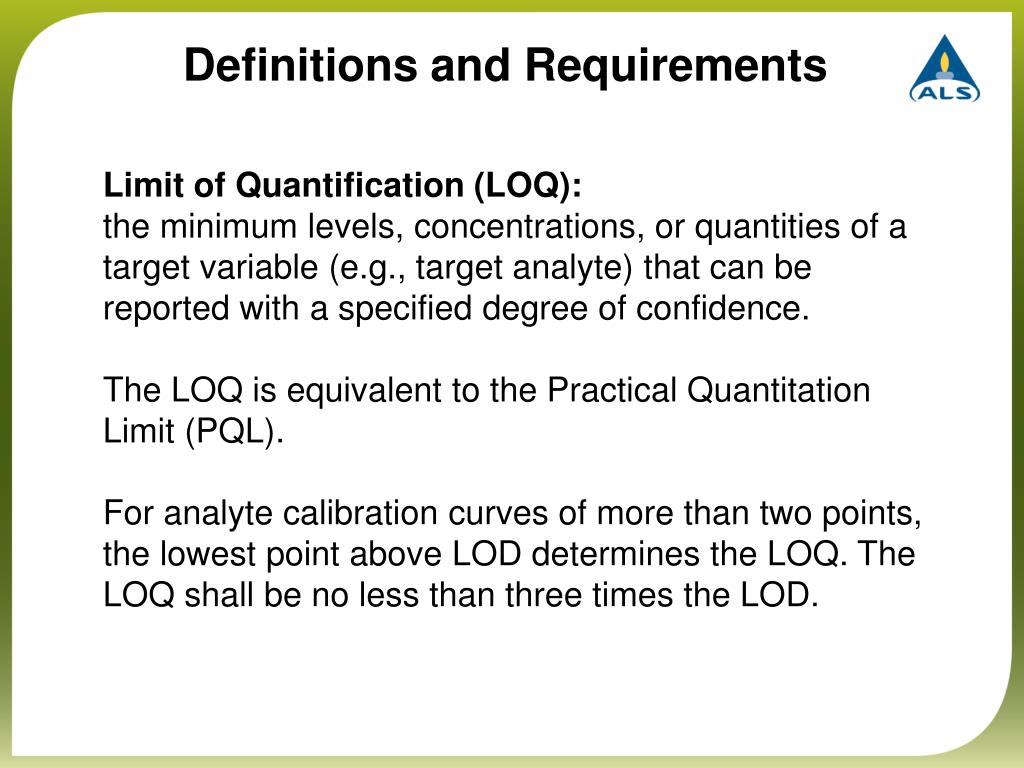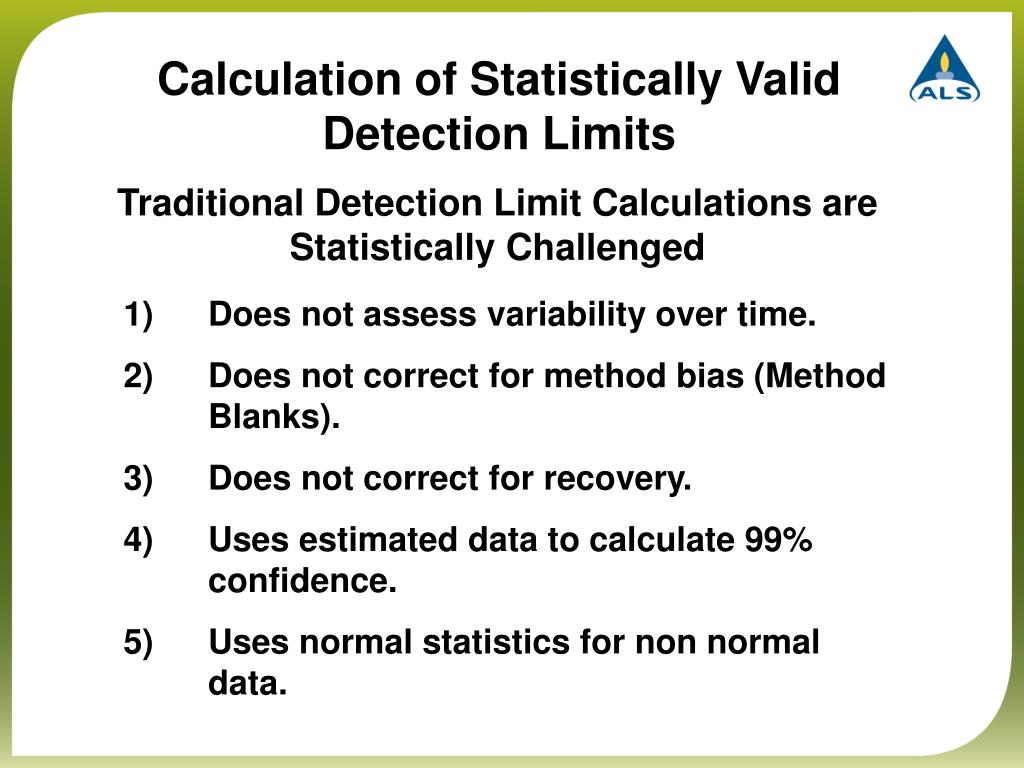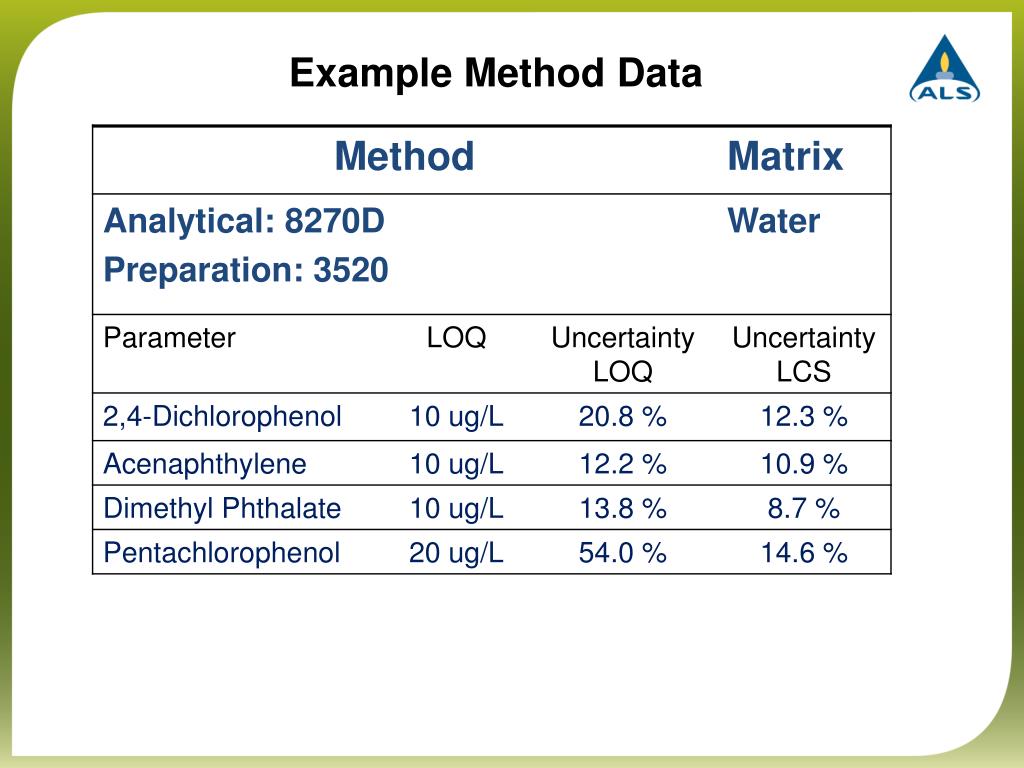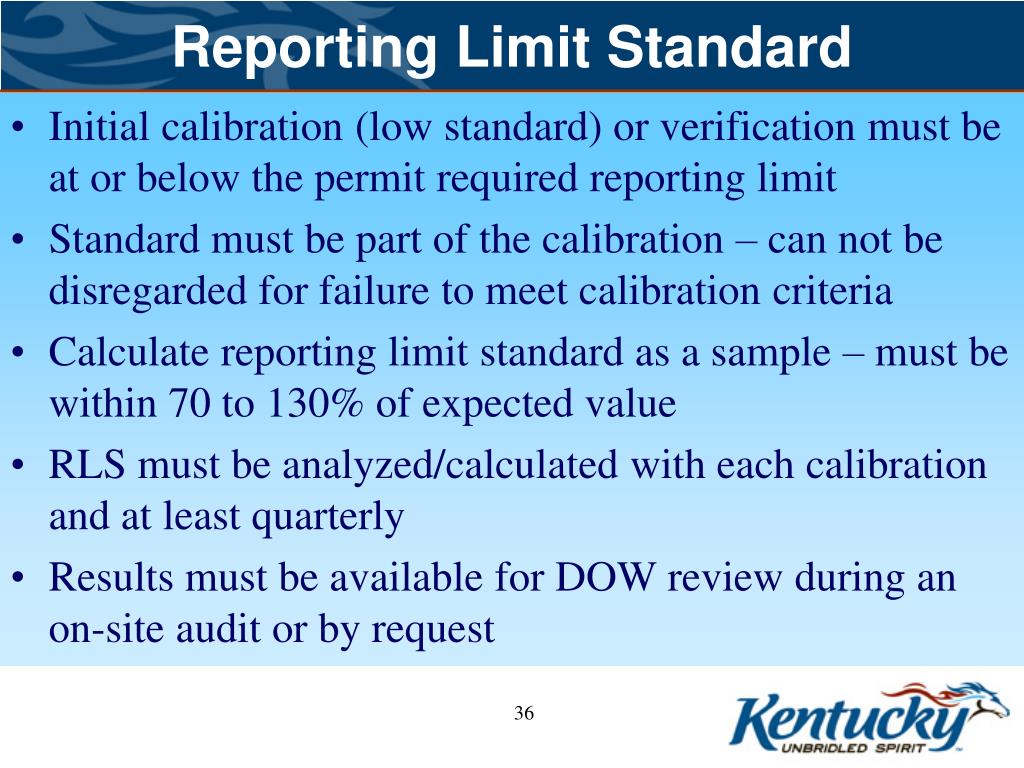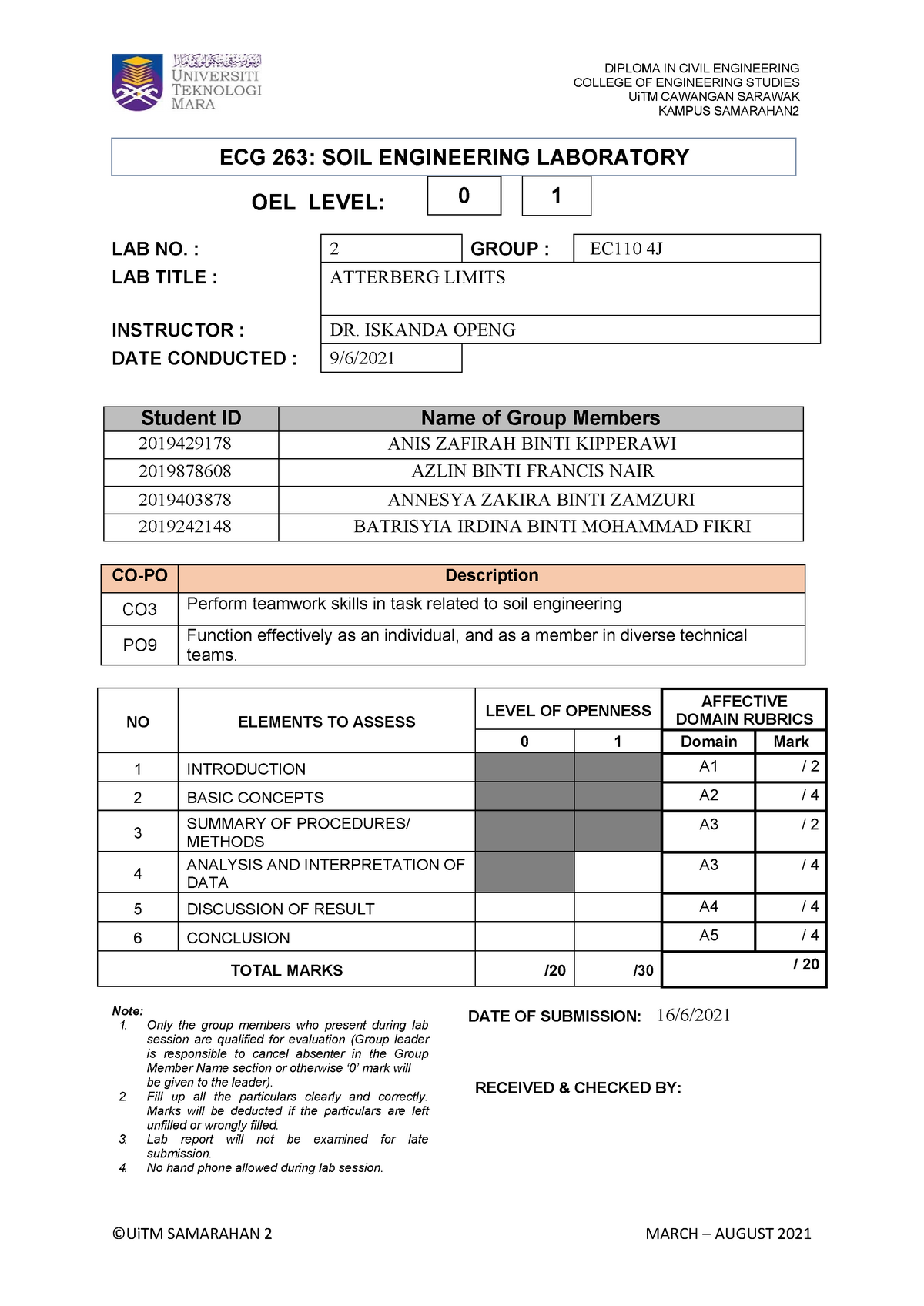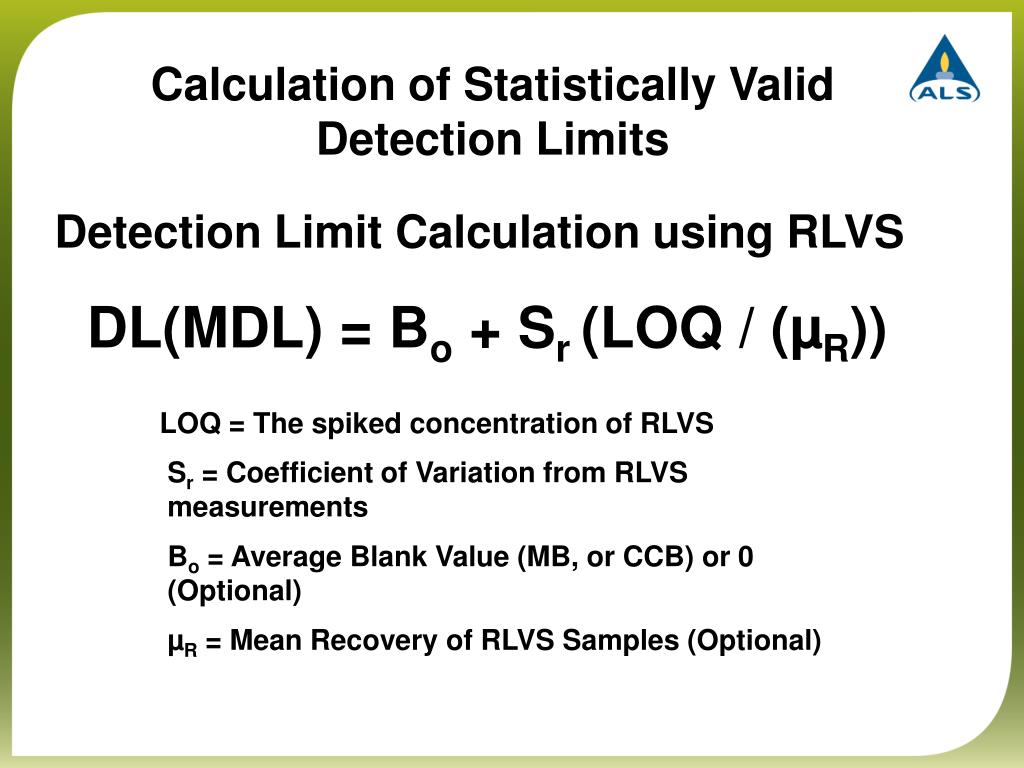What Is A Lab Reporting Limit - A reporting limit (rl or rdl) is the limit of detection for a specific target analyte for a specific sample after any adjustments have. The detection limit refers to the lowest concentration of a substance that can be reliably detected by an analytical method, while the. Looking at the expressions above, you may notice that there are two distinct classes of reporting limits: The reporting limit (rl) or reporting detection limit (rdl) is the lowest concentration of a contaminant that can be reported with a high. Mdls are the starting point within a laboratory of defining normal reporting limits (rls), also called practical quantitation limits.
Looking at the expressions above, you may notice that there are two distinct classes of reporting limits: Mdls are the starting point within a laboratory of defining normal reporting limits (rls), also called practical quantitation limits. The reporting limit (rl) or reporting detection limit (rdl) is the lowest concentration of a contaminant that can be reported with a high. The detection limit refers to the lowest concentration of a substance that can be reliably detected by an analytical method, while the. A reporting limit (rl or rdl) is the limit of detection for a specific target analyte for a specific sample after any adjustments have.
The reporting limit (rl) or reporting detection limit (rdl) is the lowest concentration of a contaminant that can be reported with a high. The detection limit refers to the lowest concentration of a substance that can be reliably detected by an analytical method, while the. A reporting limit (rl or rdl) is the limit of detection for a specific target analyte for a specific sample after any adjustments have. Mdls are the starting point within a laboratory of defining normal reporting limits (rls), also called practical quantitation limits. Looking at the expressions above, you may notice that there are two distinct classes of reporting limits:
PPT Reporting Limits How Good Are They PowerPoint Presentation
The reporting limit (rl) or reporting detection limit (rdl) is the lowest concentration of a contaminant that can be reported with a high. A reporting limit (rl or rdl) is the limit of detection for a specific target analyte for a specific sample after any adjustments have. Mdls are the starting point within a laboratory of defining normal reporting limits.
PPT Reporting Limits How Good Are They PowerPoint Presentation
Looking at the expressions above, you may notice that there are two distinct classes of reporting limits: Mdls are the starting point within a laboratory of defining normal reporting limits (rls), also called practical quantitation limits. The reporting limit (rl) or reporting detection limit (rdl) is the lowest concentration of a contaminant that can be reported with a high. The.
PPT Reporting Limits How Good Are They PowerPoint Presentation
Mdls are the starting point within a laboratory of defining normal reporting limits (rls), also called practical quantitation limits. The reporting limit (rl) or reporting detection limit (rdl) is the lowest concentration of a contaminant that can be reported with a high. A reporting limit (rl or rdl) is the limit of detection for a specific target analyte for a.
PPT Laboratory Detection and Reporting Limits for Beryllium Samples
The reporting limit (rl) or reporting detection limit (rdl) is the lowest concentration of a contaminant that can be reported with a high. A reporting limit (rl or rdl) is the limit of detection for a specific target analyte for a specific sample after any adjustments have. Mdls are the starting point within a laboratory of defining normal reporting limits.
PPT Wastewater Laboratory Certification PowerPoint Presentation, free
Mdls are the starting point within a laboratory of defining normal reporting limits (rls), also called practical quantitation limits. The reporting limit (rl) or reporting detection limit (rdl) is the lowest concentration of a contaminant that can be reported with a high. Looking at the expressions above, you may notice that there are two distinct classes of reporting limits: A.
Lab Report Atterberg Limits ECG 263 SOIL ENGINEERING LABORATORY
The detection limit refers to the lowest concentration of a substance that can be reliably detected by an analytical method, while the. Mdls are the starting point within a laboratory of defining normal reporting limits (rls), also called practical quantitation limits. A reporting limit (rl or rdl) is the limit of detection for a specific target analyte for a specific.
How To Write A Lab Report www.medicalcollegekolkata.in
Mdls are the starting point within a laboratory of defining normal reporting limits (rls), also called practical quantitation limits. The reporting limit (rl) or reporting detection limit (rdl) is the lowest concentration of a contaminant that can be reported with a high. Looking at the expressions above, you may notice that there are two distinct classes of reporting limits: A.
PPT Reporting Limits How Good Are They PowerPoint Presentation
The detection limit refers to the lowest concentration of a substance that can be reliably detected by an analytical method, while the. The reporting limit (rl) or reporting detection limit (rdl) is the lowest concentration of a contaminant that can be reported with a high. Looking at the expressions above, you may notice that there are two distinct classes of.
Laboratory methods and reporting limits. Download Table
The reporting limit (rl) or reporting detection limit (rdl) is the lowest concentration of a contaminant that can be reported with a high. Looking at the expressions above, you may notice that there are two distinct classes of reporting limits: Mdls are the starting point within a laboratory of defining normal reporting limits (rls), also called practical quantitation limits. A.
Cell Size & Diffusion Lab Report Understanding Limits
A reporting limit (rl or rdl) is the limit of detection for a specific target analyte for a specific sample after any adjustments have. The detection limit refers to the lowest concentration of a substance that can be reliably detected by an analytical method, while the. Mdls are the starting point within a laboratory of defining normal reporting limits (rls),.
Mdls Are The Starting Point Within A Laboratory Of Defining Normal Reporting Limits (Rls), Also Called Practical Quantitation Limits.
The detection limit refers to the lowest concentration of a substance that can be reliably detected by an analytical method, while the. Looking at the expressions above, you may notice that there are two distinct classes of reporting limits: A reporting limit (rl or rdl) is the limit of detection for a specific target analyte for a specific sample after any adjustments have. The reporting limit (rl) or reporting detection limit (rdl) is the lowest concentration of a contaminant that can be reported with a high.
